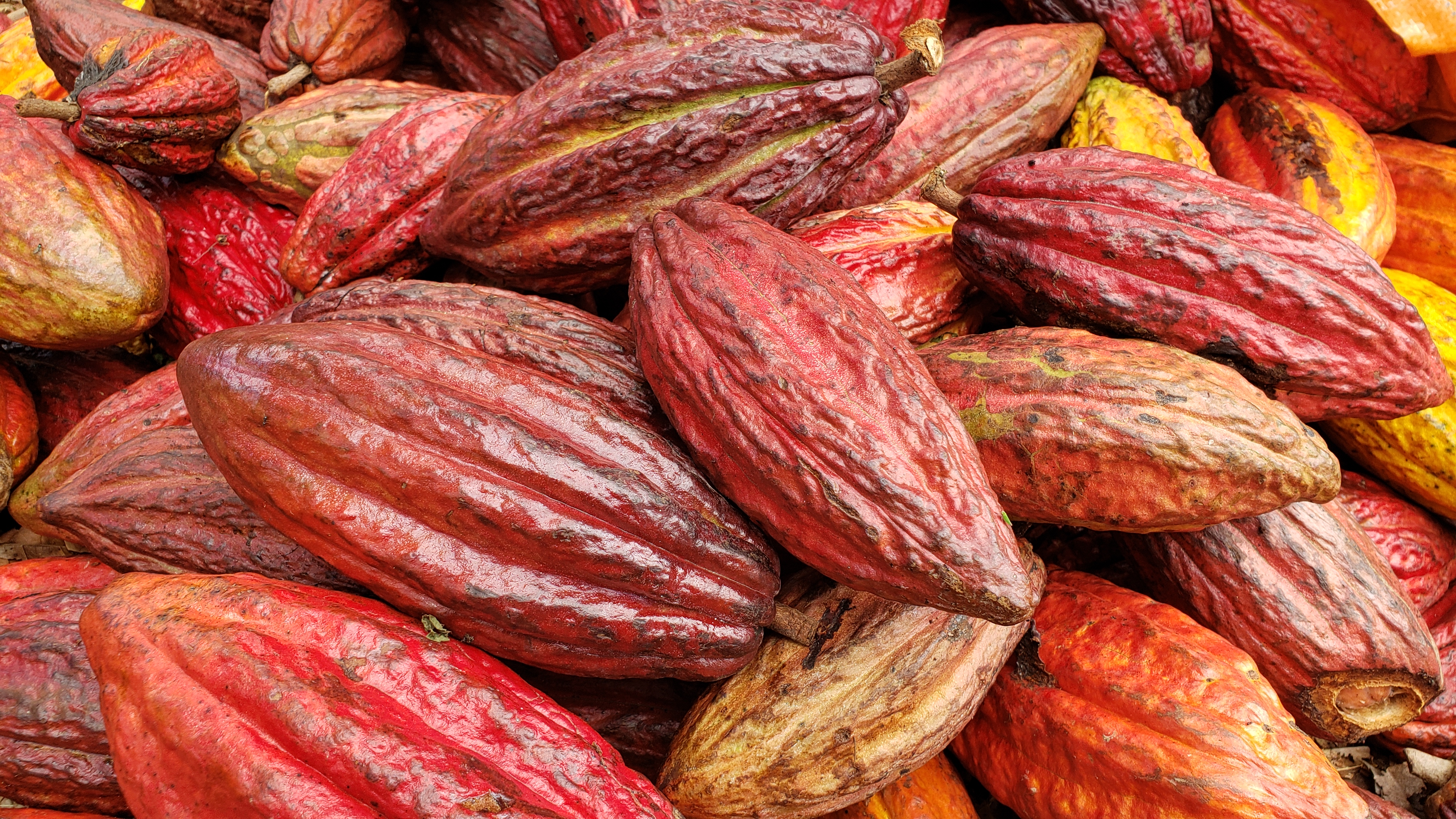
March 11, 2020, by Lexi Earl
Researching fermentation in cocoa
Prof David Salt recently visited the Cocoa Research Centre in Trinidad & Tobago. In this post he reflects on our cocoa project in Colombia, and the work we are developing with the CRC.
Our Colombian cocoa project began because we were interested in understanding the connections between the way fermentation works in cocoa beans and how this then affects flavour. We have known for a long time that fermentation affects flavour, but there has not been an in-depth, systematic analysis to understand what happens at the molecular and environmental levels. How do these factors interact to make the fermentation go one way or another? How does that then result in a particular flavour? The genetics of the cocoa tree and the environment interact together and affect fermentation. The end result is cocoa beans and chocolate with different flavours.

Prof Salt looking at fermentation boxes filled with cocoa beans, with colleagues from CRC
Until now, our understanding of fermentation has been fairly binary – it is either good or bad. If it is a good fermentation, the beans can be sold to make chocolate. If it is a bad fermentation, the farmer won’t be able to sell the beans, or will get a low price. Now, with the growth of the premium bean-to-bar market, single origin chocolate, scientists, farmers and chocolate makers are starting to dissect more carefully what happens during the fermentation, including analysing farm locations, genetic varieties, and other factors that might influence flavour development. People are becoming much more interested in all the various flavours cocoa can develop. This is very much like what has happened in the wine space, where the skill of the winemaker is used to tease out all the potential flavours of the grape. We seem to be at the very beginning of that in cocoa, and understanding fermentation is a key step in order to optimally express different flavours.

Prof Salt inspecting cocoa beans drying at a farm local to the CRC.
Our Colombia project has been a stepping stone towards that understanding. But in order to further this research we need to be able to experiment in controlled environments, as well as understanding what happens in the natural environment, on the farm. It is useful to us, as scientists, to find out what creates good fermentations but also what causes bad fermentations. That is not something that can be done on-farm, because that would affect the farmers’ ability to sell their cocoa beans and thus negatively affect their livelihoods.

Prof Salt looking at cocoa fermentations with a colleague from CRC.
By working with the CRC, we are able to experiment with fermentations in both the controlled environment of a lab and the natural environment on the farm. In Trinidad, the CRC has mapped the flavour regions across the island, and farmers document flavour against the location of the beans. We can then work with the CRC to understand fermentations that produce nutty flavours, or citrus or floral ones. The possibilities are endless. We are very excited about this developing collaboration.

Prof Salt (left) with Prof Umaharan Pathmanathan (centre) and Darin Sukha (right) from the Cocoa Research Centre in Trinidad.
No comments yet, fill out a comment to be the first

Leave a Reply